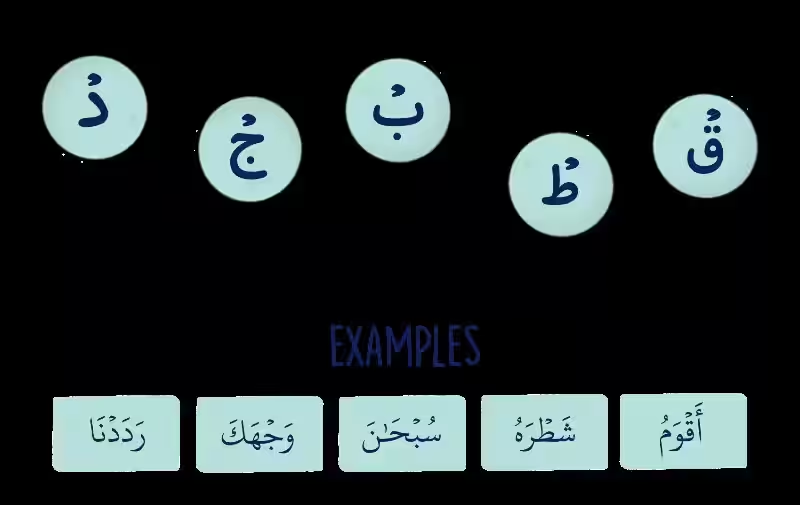
The Quran, the holy book of Islam, is a rich tapestry of verses, each carrying profound meaning. Reciting it correctly, with precision and reverence, is paramount. A crucial aspect of this recitation is understanding the rules of stopping (Waqf). These rules, meticulously detailed throughout Islamic scholarship, ensure the accurate interpretation and preservation of the Quran’s message. This article explores these rules, their significance, and the symbols that guide reciters.
The Importance of Waqf in Quranic Recitation
Waqf, the act of pausing or stopping during Quranic recitation, is not simply a matter of punctuation. It’s a fundamental element in understanding the text’s intended meaning. Inaccurate pauses can alter the flow and impact the overall message, leading to misinterpretations. Just as a misplaced comma can drastically change the meaning of a sentence, a misapplied Waqf can distort the Quran’s intended message. Mastering these rules is therefore essential for both the individual reciter’s spiritual growth and for the broader community’s understanding of the divine text. The careful consideration of pauses and stops, therefore, is a cornerstone of proper Quranic recitation. This emphasizes the necessity of a deep understanding of these rules, promoting a richer and more accurate comprehension of the sacred text.
Quranic Symbols for Waqf: A Visual Guide
A critical aspect of Waqf lies in the visual cues provided in the Mushaf (Quran manuscript). These symbols, meticulously developed over centuries, guide the reciter in understanding the appropriate points for pauses and stops. These symbols aren’t arbitrary; they are carefully crafted to reflect the nuances of Arabic grammar, syntax, and the intended meaning within each verse. This approach reflects the meticulous attention to detail and the profound reverence for the Quranic text itself.
Types of Stopping Signs
The Mushaf uses various symbols to denote different types of stops:
-
Mandatory Stop (مـ): This symbol indicates an obligatory pause, a point where the recitation must stop without any deviation. These are often tied to grammatical structures. The reciter has no choice but to stop at these points. Failure to adhere to these mandatory stops can lead to a misinterpretation of the sentence.
-
Normal Stop (ط): This symbol indicates a normal or usual stopping point. While the reciter may choose to continue, pausing at these points is generally considered preferable. The fluidity of the text depends on this symbol in its proper use.
-
Permissible Stop (ج): This symbol allows the reciter to either pause or continue. Often, it depends on the context within the sentence. The decision to stop or continue is left to the reciter’s judgment, but stopping is not wrong. Understanding the context and grammatical structures is important here.
-
Avoid Stopping (لا): This symbol advises against stopping at the location. It usually denotes a continuous flow of speech. These symbols are essential to preserve the intended meaning. This symbol ensures the reciter does not insert pauses that can alter the original intent.
These are not the only symbols; other nuances exist, reflecting the rich complexity of Arabic syntax and the Quran’s profound message.
The Importance of Ibtida
Ibtida, the resumption of recitation after a pause, is equally important as Waqf. The rules for resuming recitation are specific, ensuring the smooth flow of the text and avoiding abrupt transitions. Incorrect Ibtida, just as with improper Waqf, can lead to misinterpretations. It’s therefore crucial to carefully follow the rules for resuming, ensuring that the recitation flows naturally and that the meaning is preserved. The appropriate resumption technique ensures the reciter maintains a correct line of understanding.
The Benefits of Accurate Waqf
Adhering to the rules of Waqf yields numerous benefits:
-
Preserving Clarity of Meaning: Correct stops enhance the understanding of the Quran’s verses by preventing misinterpretations.
-
Demonstrating Respect: A proper recitation signifies respect for the Quran’s sacred text and its divine message.
-
Encouraging Reflection: Pauses provide opportunities for reflection and deeper contemplation of the verses’ meaning.
-
Ensuring Smooth Recitation: The rules ensure a natural rhythm and flow in the recitation.
-
Elevating Faith: Accurate recitation deepens the spiritual connection with the Quran and strengthens faith.
Understanding these rules, therefore, is not merely a technical exercise; it’s a spiritual practice.
Utilizing Supplementary Resources
For non-native Arabic speakers or those without specialized knowledge, supplementary resources are essential. Learning basic Arabic grammar and vocabulary can greatly enhance the understanding of Waqf rules. Tafseer (Quranic commentary) provides valuable context and insights into the intended meaning of each verse, offering important perspective. This means reciters must strive to learn about the context and background of the verses. This combination of linguistic and contextual understanding significantly enhances the appreciation and understanding of the Quran.
Variations and Considerations
It’s important to acknowledge that different interpretations and applications of Waqf rules exist among scholars and in various regions. While the core principles remain consistent, variations might exist in specific applications. This awareness is crucial for a balanced understanding.
The rules of stopping in the Quran are crucial for accurate recitation and comprehension. By understanding and applying these rules, we can deepen our connection with the divine text and fully appreciate the profound message within. This in-depth exploration of Waqf is a vital step toward mastering the art of Quranic recitation and drawing closer to the divine. Employing the correct stopping signs (Waqf) leads naturally to a deeper understanding of the holy text.








